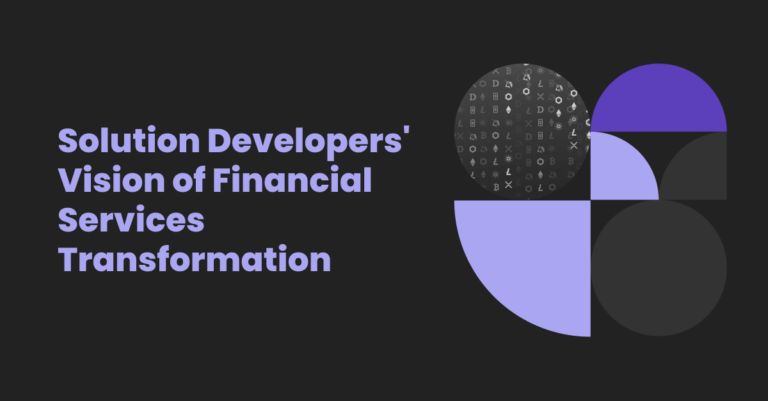Although there is a variety of programming languages, some are more commonly used than others. According to the PYPL Index, the five most popular programming languages globally are Python, Java, JavaScript, C#, and C/C++, which are used in object-oriented programming (OOP).
OOP is a fundamental programming paradigm every developer uses throughout their career. In this article, we will elaborate on the definition, core principles, criticism, and benefits of object-oriented programming.
What Is OOP?

Object-oriented programming or OOP is a computer programming model that focuses on objects rather than functions and logic in terms of software design. By objects, data fields with unique attributes and behavior are implied. During development, an IT specialist manipulates objects without placing a focus on the required logic.
OOP is usually applied for large-scale, complex programs that are actively updated or maintained. Typical examples include mobile apps, as well as design and manufacturing programs. Moreover, such an approach allows facilitated teamwork, as OOP is suitable for development that’s broken down into groups.
Every OOP program is based on four fundamental building blocks:
- Classes. These are user-defined data types that serve as a blueprint for the structure of methods and attributes. Later, these blueprints are used to create objects. Classes contain fields for attributed and methods for behaviors. There can be parent (super/base) and child (derived/extended) classes.
- Objects. As mentioned above, objects are inherited from classes based on the established blueprints. Basically, they are instances of a class designed with specifically defined data that can represent real-world objects or an abstract entity. Each object has specific states (defined by data like name, birthday, etc.) and behaviors (methods the object can undertake).
- Methods. By methods, OOP understands functions defined inside a class. They describe the behaviors of an object. There are also instance methods – subroutines contained in an object.
- Attributes. They represent the state of an object and are defined in the class template. The attributes field stores data contained by Objects when they are created.
To have a better understanding of how these building blocks correlate, let’s take a look at a simple example. You have a Class called “Humans,” where you create a Person Object. This Person has specific Attributes: skin and hair color, age, weight, height, and many more. The Person also can perform actions, for example, have a meal, take a nap, pick up a box, and others that are defined as Functions or Methods.
While Attributes are unique to every Object, Methods apply to a whole Class. At the same time, a programmer can set up Instance Methods that belong to individual objects only; they’ll have access to instance variables for the specific object they are called on – or inputs.
4 Core Principles of OOP

The paradigm of object-oriented programming is based on four main principles:
- Inheritance: Child classes inherit attributes and behaviors of parent classes, while, at the same time, they can be extended. The principle allows a programmer to create a generic parent class that will serve as a basis for more specific child classes, which will automatically have access to the basic functionality of the parent class. As a result, this facilitates code reusability and significantly simplifies the development, eliminating the necessity to create analog classes several times.
- Encapsulation: All the important information about an Object is private and is held inside it. The programmer decides which data to expose to the outside world. Basically, it means that internal software code implementation is hidden inside a class, while internal data – inside an object accelerating the security by concealing important data within private sections. Private code can only be accessed from within the class it’s designed for. What is more, it can’t be updated by methods, which reduces the risks of phishing or changes performed by mistake.
- Abstraction: Being an extension of encapsulation, abstraction implies that simple things represent complexity while complex details are hidden from users. To make an analogy, think of a car that has a simple User Interface (a steering wheel, gas, brakes) but is run by a complex hidden engine. The principle also adds to the code security, as the data isn’t exposed: one accesses the data through classes and modifies it through methods.
- Polymorphism: Objects can share behaviors since a child class inherits methods of the parent class. Polymorphism allows the same method to execute a behavior in two ways: method overriding (a different implementation of the same behavior) and method overloading (when the outcome varies depending on the number of parameters passed into the method called).
Examples of Object-Oriented Programming Languages

The approach unites a variety of object-oriented programming languages that feature an object with attributes and behaviors, as well as adhere to four OOP principles. While there are many OOP languages, some of them pair with the paradigm better than others. The most popular ones are Ruby or Emerald, while some appeared primarily for OOP – Java, Python, and C++. Here is a list of the most widely-used object-oriented programming languages:
- Java. One of the leaders, Java shares all OOP principles: it allows creating reusable tools (Abstraction), using a reference in a parent class to affect an object in the child class (Polymorphism), and re-using functionality without jeopardizing security (Encapsulation). It also supports the adoption of properties between parent and child classes (Inheritance). With Java, engineers can save time on repetitive tasks without compromising security. At the same time, the language is easy to use.
- JavaScript. Although JavaScript isn’t purely OOP, it can still be applied in terms of the paradigm. The language has a lot in common with OOP, as it’s a prototype-based language: one object serves as a template for another object. While objects don’t share the prototype’s properties, they still have access to them, which also simplifies the development process.
- Python. The most popular programming language in the world focuses on creating a reusable code, which derives from the principles of inheritance and polymorphism. Relying on encapsulation, Python adds an extra security layer, protecting important data. All in all, the language is well-matched with OOP and focuses on classes and projects when programming.
- C#. C# was created by Microsoft as a processor of C to build secure and robust apps run in .NET based on the OOP paradigm. The language allows inheritance from a single root Object type. The values of all types can be stored, transported, and operated upon.
- Ruby. Although you can write a code with Ruby without Objects and Classes, they significantly simplify the programmers’ life, making Ruby among the most popular OOP languages. It even has unique methods. For example, “initialize” is called to create a Ruby object. Ruby allows you to specify which object-related data you want to expose or hide, which is a plus in terms of security.
- Kotlin. Designed by JetBrains to interoperate fully with Java, it’s no surprise that Kotlin falls into the OOP paradigm. The language for Android applications is focused on objects, which access features with modifiers: private for inside class access, public for anyone to access, protected for class and subclass access, and internal for inside-module access.
- PHP. Traditionally serving as a server-side scripting language and primarily used for web development, PHP has found its way into OOP. PHP OOP is a principle that was added to PHP5 for the sake of building complex and reusable web applications. With OOP, PHP developers can better adhere to a DRY (Don’t Repeat Yourself) concept, facilitating the maintenance and modification of the code.
- C++. Another member of the C family, C++, is a multi-paradigm language that has a lot in common with OOP. Experts haven’t come to a final conclusion on whether to consider C++ an OOP or not, as the language is less object-oriented compared to Python or Ruby. Some even refer to it as a semi-object-oriented programming language. Nonetheless, many engineers code with C++ in terms of OOP.
A programming language is a choice you should make considering numerous factors. Among them are the scope and nature of the future IT solution, the scope of a team, and the approach to team management. Besides, you should take into account the skills and extensive professional experience of the developers. While Talent Mapping is a hard task in a current highly competitive labor market, Develux can help you find a team of skilled IT engineers with a proven record of expertise in a specific programming language.
OOP Advantages and Criticism
Like with any approach to programming, OOP has its advocates and critics. Both have their reasons to support the paradigm or not. Typically, the defenders appeal to the benefits of object-oriented programming:
- Security. Thanks to the principles of encapsulation and abstraction, complex parts of a code are hidden, and internal protocols are safeguarded. This also facilitates software maintenance.
- Reusability. Because of the code reusability, a programmer doesn’t have to write the same lines again and again. This speeds up the development and eliminates the need for repetitive tasks.
- Modularity. Encapsulation makes every object self-contained, which fosters simpler troubleshooting and collaborative development.
- Flexibility. Due to polymorphism, one function (or method) applies and adapts to a whole class, making every object that belongs to the class share similar behaviors.
- Collaborative work. Since the code is broken into classes, several IT engineers can easily work on the same project without compromising productivity and efficiency.
- Scalability. The object-based approach allows a developer to easily make updates and improvements.
The OOP critics highlight a lot of factors why object-oriented programming should be abandoned. Among them are:
- The inability to meet reusability and modularity goals
- An overemphasis on data and objects over algorithms that aren’t less important in programming
- The complexity of the development process
Final Thoughts
Choosing an approach to software development is a complex task that requires not only knowledge but also prior experience. Without these, you will have a hard time studying various types of programming such as imperative (procedural programming, object-oriented programming, parallel processing approach) or declarative (logic programming, functional programming, database processing approach). The first one is a rather popular approach used for complex projects development that implies the involvement of big teams.
While no approach is perfect, all of them are viable in one or another case. To choose right, it’s always better to turn to professionals for IT consulting. We at Develux can help you break down the goals of your project to choose the right paradigm and tech stack. Besides this, we can gather a dedicated team with a proven professional background that will deliver the desired outcome fast and without extra work on your side.
















